Yen Meng
Effective Context in Neural Speech Models
May 28, 2025Abstract:Modern neural speech models benefit from having longer context, and many approaches have been proposed to increase the maximum context a model can use. However, few have attempted to measure how much context these models actually use, i.e., the effective context. Here, we propose two approaches to measuring the effective context, and use them to analyze different speech Transformers. For supervised models, we find that the effective context correlates well with the nature of the task, with fundamental frequency tracking, phone classification, and word classification requiring increasing amounts of effective context. For self-supervised models, we find that effective context increases mainly in the early layers, and remains relatively short -- similar to the supervised phone model. Given that these models do not use a long context during prediction, we show that HuBERT can be run in streaming mode without modification to the architecture and without further fine-tuning.
Once-for-All Sequence Compression for Self-Supervised Speech Models
Nov 04, 2022Abstract:The sequence length along the time axis is often the dominant factor of the computational cost of self-supervised speech models. Works have been proposed to reduce the sequence length for lowering the computational cost. However, different downstream tasks have different tolerance of sequence compressing, so a model that produces a fixed compressing rate may not fit all tasks. In this work, we introduce a once-for-all (OFA) sequence compression framework for self-supervised speech models that supports a continuous range of compressing rates. The framework is evaluated on various tasks, showing marginal degradation compared to the fixed compressing rate variants with a smooth performance-efficiency trade-off. We further explore adaptive compressing rate learning, demonstrating the ability to select task-specific preferred frame periods without needing a grid search.
On Compressing Sequences for Self-Supervised Speech Models
Oct 14, 2022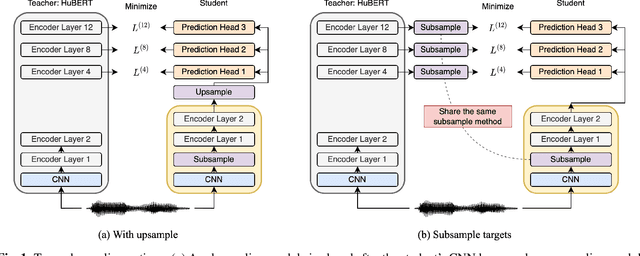
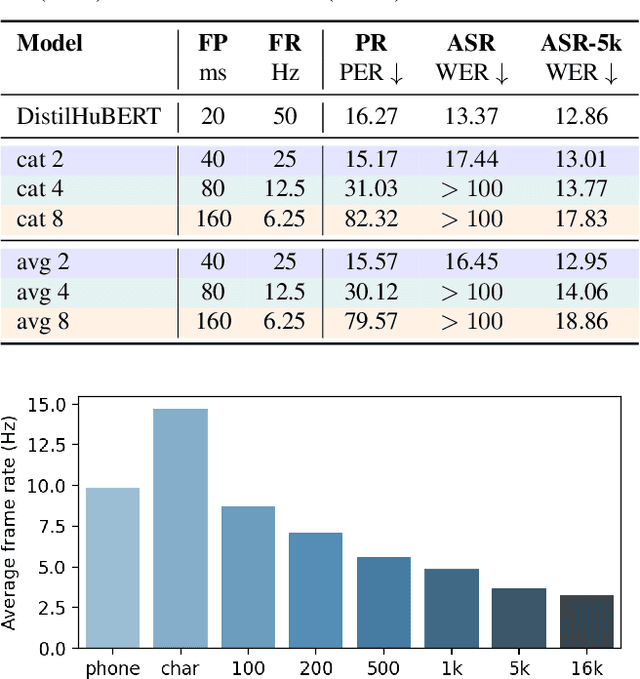
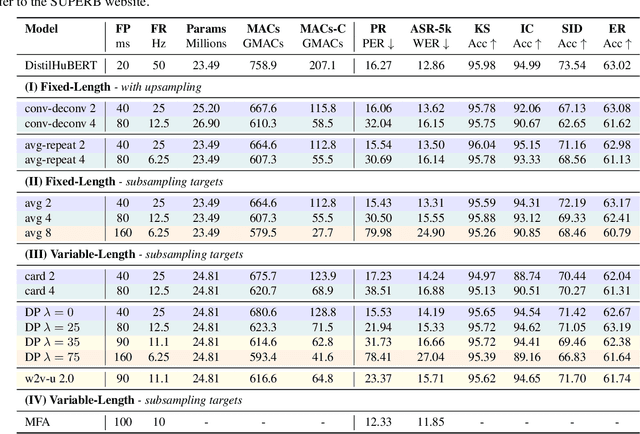

Abstract:Compressing self-supervised models has become increasingly necessary, as self-supervised models become larger. While previous approaches have primarily focused on compressing the model size, shortening sequences is also effective in reducing the computational cost. In this work, we study fixed-length and variable-length subsampling along the time axis in self-supervised learning. We explore how individual downstream tasks are sensitive to input frame rates. Subsampling while training self-supervised models not only improves the overall performance on downstream tasks under certain frame rates, but also brings significant speed-up in inference. Variable-length subsampling performs particularly well under low frame rates. In addition, if we have access to phonetic boundaries, we find no degradation in performance for an average frame rate as low as 10 Hz.
Don't speak too fast: The impact of data bias on self-supervised speech models
Oct 15, 2021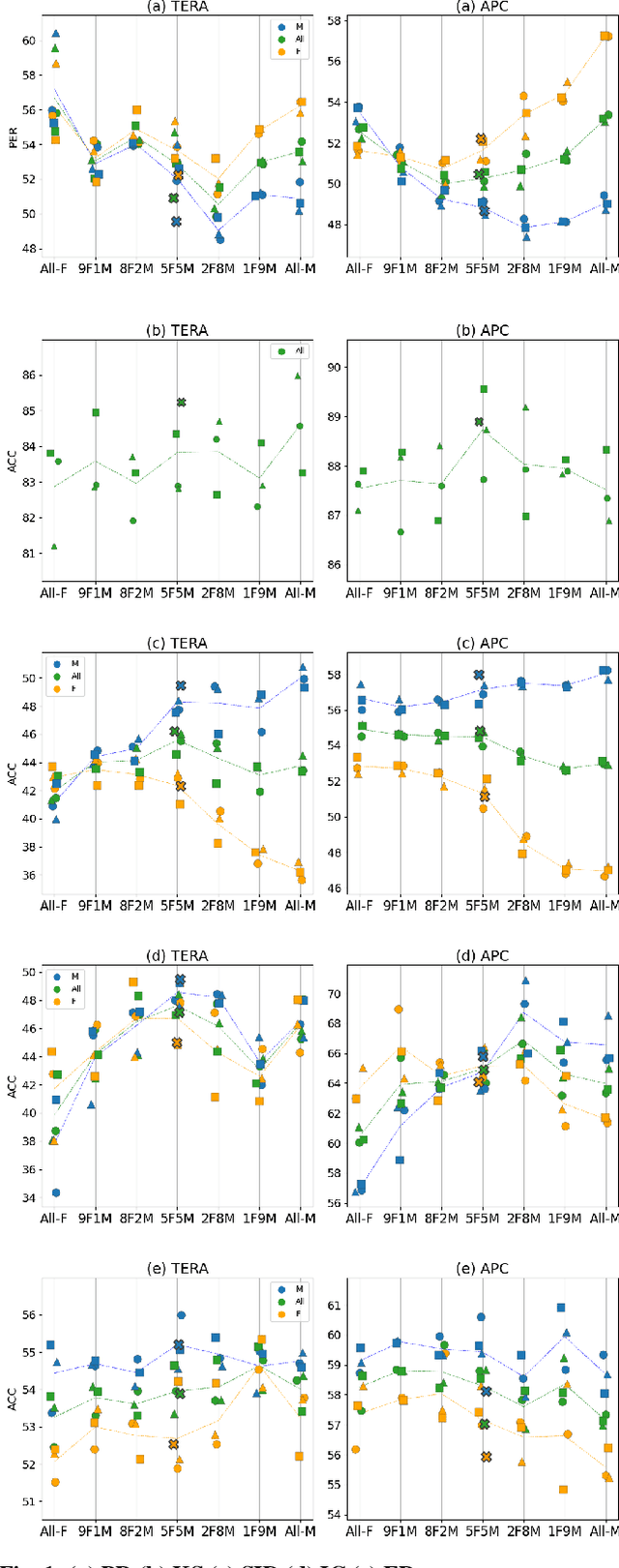

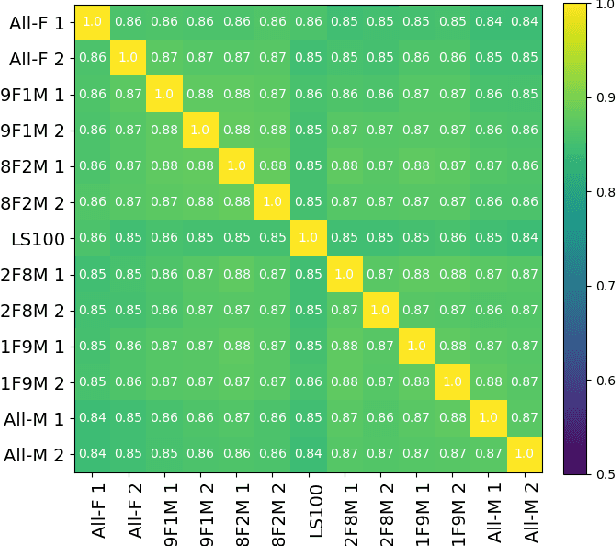
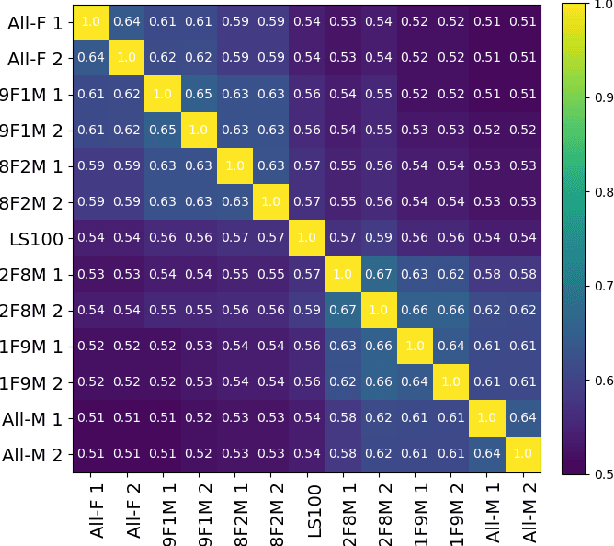
Abstract:Self-supervised Speech Models (S3Ms) have been proven successful in many speech downstream tasks, like ASR. However, how pre-training data affects S3Ms' downstream behavior remains an unexplored issue. In this paper, we study how pre-training data affects S3Ms by pre-training models on biased datasets targeting different factors of speech, including gender, content, and prosody, and evaluate these pre-trained S3Ms on selected downstream tasks in SUPERB Benchmark. Our experiments show that S3Ms have tolerance toward gender bias. Moreover, we find that the content of speech has little impact on the performance of S3Ms across downstream tasks, but S3Ms do show a preference toward a slower speech rate.
 Add to Chrome
Add to Chrome Add to Firefox
Add to Firefox Add to Edge
Add to Edge